Top speed 287 km/h Length 16 m Cruise speed 249 km/h First flight March 13, 1977 | Wingspan 13 m Weight 3,177 kg Engine type Allison Model 250 | |
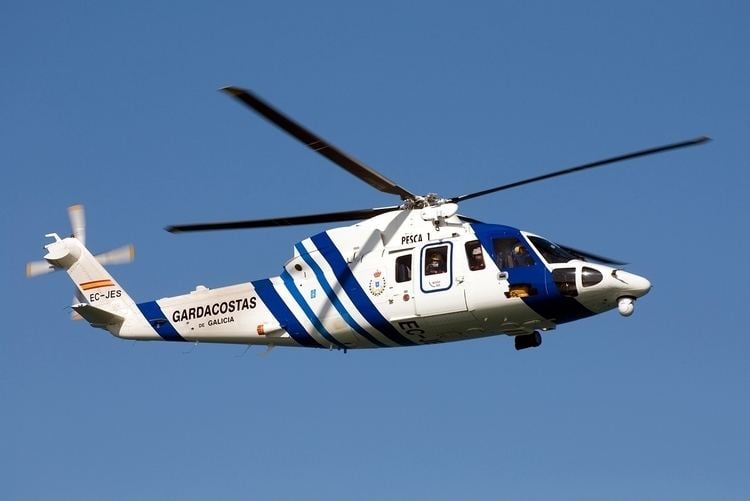 | ||
The Sikorsky S-76 is an American medium-size commercial utility helicopter, manufactured by the Sikorsky Aircraft Corporation. The S-76 features twin turboshaft engines, four-bladed main and tail rotors and retractable landing gear.
Contents
- Development
- Design
- Civil
- Military
- Experimental derivatives
- Military and government operators
- Accidents
- Specifications Sikorsky S 76C
- References
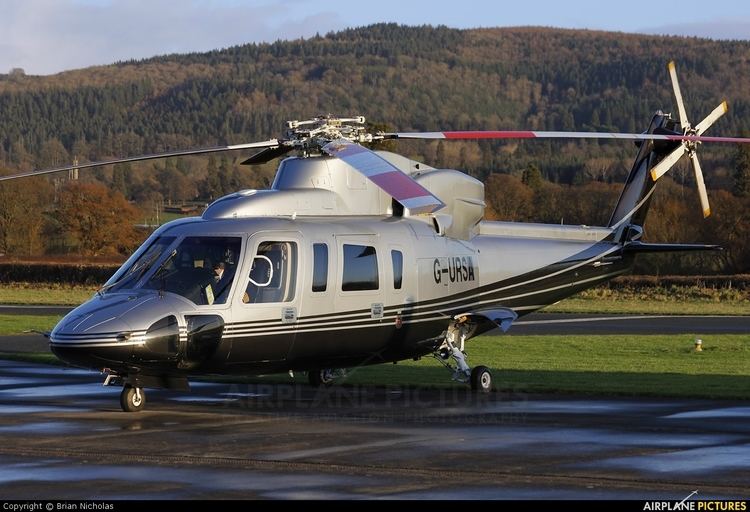
Development
The development of the S-76 began in the mid-1970s as the S-74, with the design goal of providing a medium helicopter for corporate transportation and the oil drilling industry; the S-74 was later redesignated the S-76 in honor of the U.S. Bicentennial. Sikorsky's design work on the S-70 helicopter (which was selected for use by the United States Army as the UH-60 Black Hawk) was utilized in the development of the S-76, incorporating S-70 design technology in its rotor blades and rotor heads. It was the first Sikorsky helicopter designed purely for commercial rather than military use.
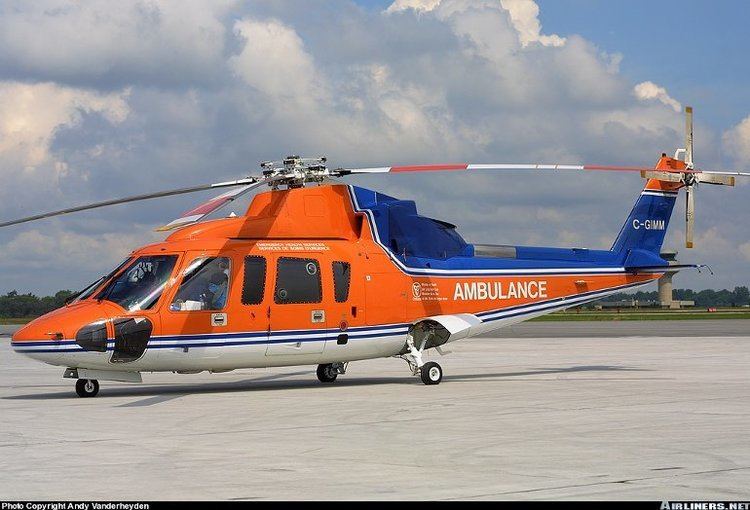
The prototype first flew on March 13, 1977. Initial US Federal Aviation Administration type certification was granted on November 21, 1978, with the first customer delivery on February 27, 1979. The S-76 was named "Spirit" late in 1978, but this name was officially dropped by the company on October 9, 1980, due to translation issues into some foreign languages.
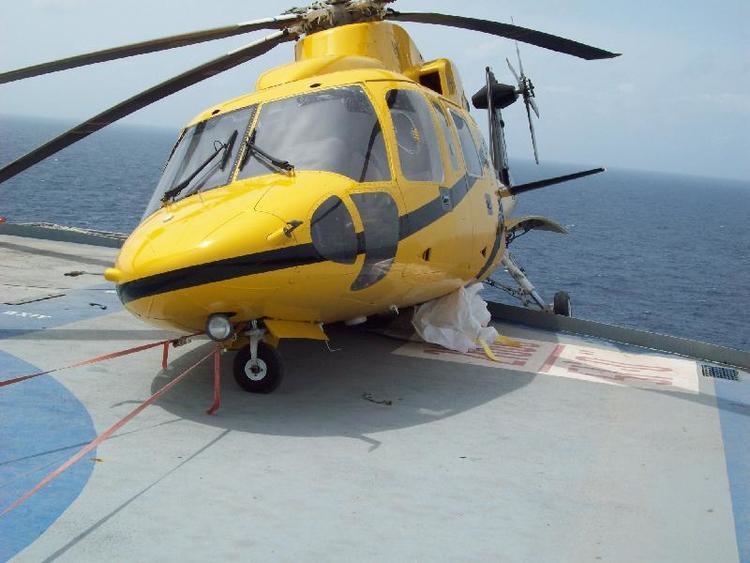
The first production variant was the S-76A. In 1982, this model set class records for range, climb, speed and ceiling. Several airlines operate the S-76A on scheduled services including Helijet Airways of Vancouver, British Columbia, Canada. The S-76 Mk II was introduced in 1982 and the S-76B in 1987, with its top speed of 155 kn (287 km/h) at sea level. Over 500 S-76s had been delivered by early 2001.
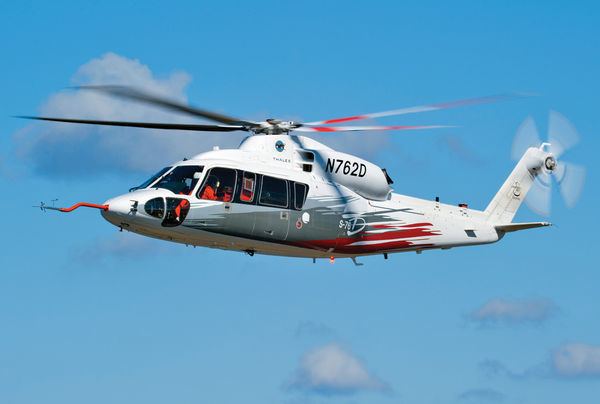
The S-76C+ was produced until December 2005. It is equipped with twin Turbomeca Arriel 2S1 engines with FADEC and a Honeywell EFIS suite. The aircraft incorporates active noise suppression, vibration dampers and a composite main rotor. On January 3, 2006, the S-76 C++ replaced earlier models in production. It is powered by two Turbomeca Arriel 2S2 engines and incorporates an improved and quieter transmission as well as minor changes in the interior equipment and avionics. There were 92 orders for this model as of January 2006.

Development of the follow-on S-76D was subject to four years of delays due to technical problems in expanding the flight envelope. The prototype made its first flight on February 7, 2009, and type certification was initially expected in 2011, with deliveries forecast for the end of that year. It was FAA certified on 12 October 2012. Three prototypes were used in the certification program, with one aircraft used to certify the optional rotor electric ice-protection system. The "D" model is powered by 1,050 hp (783 kW) Pratt & Whitney Canada PW210S engines driving composite rotors and incorporates active vibration control. Performance is substantially improved with the added power, but initial certification retains the same 11,700 lb (5,307 kg) gross weight and maximum 155 kn (287 km/h) cruise speed as earlier models. Changhe Aircraft Industries Corporation was contracted in September 2013 to produce the S-76D airframe.
Design

The S-76 is of conventional configuration, with a four-bladed fully articulated main rotor and a four-bladed anti-torque rotor on the port side of the tailboom. Two turboshaft engines are located above the passenger cabin. In the prototypes and initial production aircraft, these engines were Allison 250-C30s, a new version of the popular Allison 250 engine developed specially for the S-76, with a single-stage centrifugal compressor instead of the multi-stage axial/centrifugal compressor of earlier models of the engine, rated at 650 shp (480 kW) for takeoff. These engines are connected to the main rotor by the main gearbox, a three-stage unit with a bull gear as its final stage rather than the planetary gear used by previous generations of Sikorsky helicopters. This arrangement has 30% fewer parts and lower costs than a more conventional design.
The main rotor hub has a single piece aluminum hub with elastomeric bearings designed not to require lubrication or any other kind of maintenance throughout its design life. The main rotor blades have titanium spars and incorporate a ten degree twist to give an even loading when hovering, while they use a non-symmetrical airfoil section with a drooped leading edge. The rotor tips are tapered and swept back. Flight controls are servo-assisted, with a Stability Augmentation System fitted. A retractable nosewheel undercarriage is fitted, which gives the S-76A a 6 knots (6.9 mph; 11 km/h) increase in cruising speed; emergency flotation gear can be fitted using helium-filled bags to increase buoyancy in the event of a forced landing on water.
The fuselage of the aircraft is of mixed metal and composites construction; the nose is composed of fiberglass while the cabin primarily employs a light alloy honeycomb structure, the semi-monocoque tailboom is also constructed of light alloy. Two pilots (or a pilot and a passenger) sit side by side in the cockpit, situated ahead of the cabin, which can accommodate a further 12 passengers in three rows of four, or four to eight passengers in more luxurious executive seating.
Civil
Military
Experimental derivatives
Civil
The S-76 is in civil service around the world with airlines, corporations, hospitals, and government operators. The world's largest civilian fleet is the 79 Sikorsky S-76 helicopters operated by CHC Helicopter Corporation.
Military and government operators
Accidents
Specifications (Sikorsky S-76C++)
Data from Sikorsky
General characteristics
Performance
Avionics
